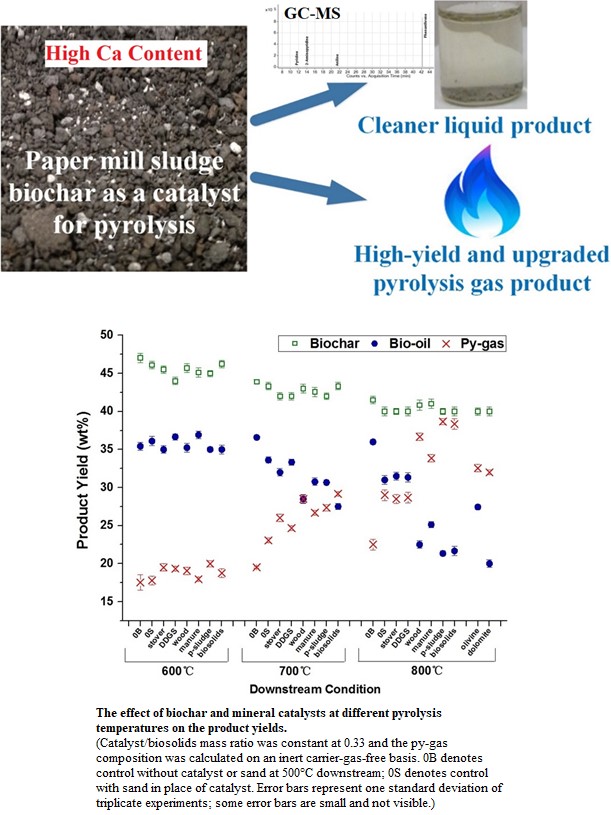2022 Annual Meeting
(620d) Optimal Biochar Catalyst Screening for Upgrading Pyrolysis Products
Authors
Biochars derived from six industrial carbonaceous wastes were evaluated for the first time in terms of their catalytic abilities during pyrolysis. Catalytic performance of these biochar catalysts was also compared to two popular mineral catalysts, calcined dolomite and sintered olivine, which have been extensively studied for tar reduction during thermochemical conversions. Paper mill sludge (p-sludge) biochar was the optimal catalyst based on its high py-gas production and py-gas energy, low catalyst loading, and long catalyst life. The p-sludge biochar catalyst approximately doubled py-gas yield compared to the control test. In addition, p-sludge biochar significantly decreased bio-oil yield (e.g. reduced by 40% at 800°C) and improved bio-oil quality by decomposing heavy hydrocarbons. The bio-oil catalyzed by p-sludge biochar contained fewer organic constituents based on GC-MS and GC-FID analyses. The catalytic activity of p-sludge biochar was stable and the majority of energy inherent to the products shifted from bio-oil to py-gas over four cycles of catalyst use. The p-sludge biochar had a high calcium content (e.g. 39% dry weight basis of 800°C biochar) which likely played an important role in upgrading pyrolysis products.
